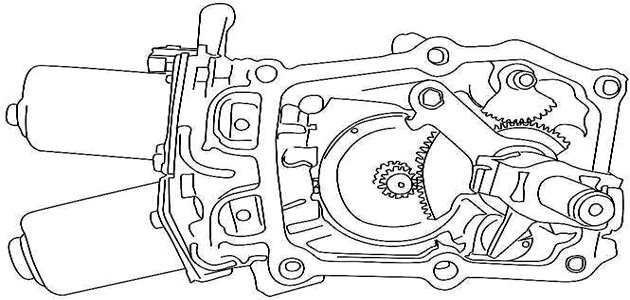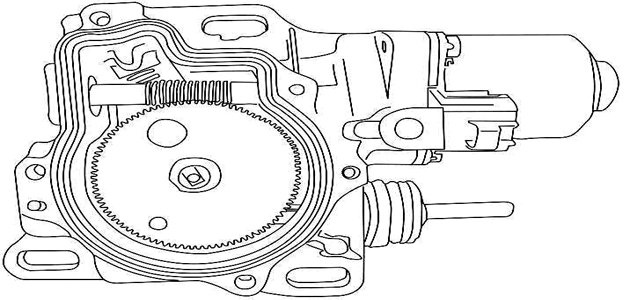Multimode and FreeTronic: Controversial Robotic Gearboxes from Toyota
In the second half of the 90s, Toyota installed only traditional gear shifting technologies on its models – automatic and manual gearboxes, and they worked pretty well. But one day, marketing specialists of the Japanese Auto Giant noticed that automated (or robotic) manual gearboxes gave been gaining popularity in Europe. Toyota just needed to see how robotic solutions of other automakers worked in practice and to complement already known solutions with its advanced technologies. But Toyota decided to resort to the method of its own trails and errors, but something certainly went wrong. In this article, we’ll become familiar with FreeTronic and Multimode gearboxes, which are considered by many experts and car enthusiasts to be far from the most successful Toyota designs.
The FreeTronic system was the first experiment
of Toyota engineers in the segment of automated (robotic) manual gearboxes. This
solution was designed on the basis of a traditional manual unit, supplemented
by an electric drive system. It operates in manual and automatic modes, the
gear shifting is provided by 3 electric motors: one of them depresses the
clutch, while 2 others engage required gears. The operation of the drives is
controlled by the TCM unit, which processes signals from numerous sensors. From
2005 to 2009, this robotic gearbox was installed on Corolla, Yaris, Prius, and
Aygo models.
1 – indicator,2 – ajar switch of the gearbox
lever, 3 – drive, 4 - sensor 1-2, 5 – reverse sensor, 6 – neutral sensor, 7 – gearbox
rotation sensor, 8 – clutch position sensor, 9 – electronic control unit
Engagement and disengagement of the FreeTronic clutch is performed by controlling the amount of fluid pressure that is applied to the clutch master cylinder. The gearbox is equipped with sensors, some of which monitor the actual position of the gear selector, while others measure the frequency of the input shaft rotation. The shift lever is equipped with ajar switches, which proactively inform the control unit on intensions of the driver to engage the gear shift lever. If there is any malfunction, the indicator starts blinking on the dashboard. The indicator also blinks when the driver shifts gears incorrectly. When a driver abruptly presses the gas pedal, the TCM unit takes it as a signal for acceleration and quickly downshifts. If the gas pedal is released, the system does not shift gears, but efficiently uses the brake power of the engine. The traction force remains stable to secure the possibility of re-acceleration.
The FreeTronic unit is equipped with the
radial-piston-type pump with the system of electric drives. This pump maintains
normal pressure in the membrane hydraulic accumulator. If the sensor detects
any pressure drops, it activates the pump. ATF flows get redistributed by a
slide (spool) valve with an electromagnet.

FreeTronic
Transmission
When Toyota cars with the FreeTronic start moving,
the control unit receives a corresponding signal. The same unit receives
signals from the sensor that keeps track of the throttle position. Then the
control unit forcibly reduces the pressure in the slide (spool) valve and
engages the clutch – and as a result the car starts moving. Next, rotational
speeds of the crankshaft and the input shaft start growing, the channel of the clutch
master cylinder opens, and the clutch starts operating to the full extent.
To put it mildly, the first Free-Tronic models, are not very reliable. The electrics of the gearbox frequently displays false trouble codes, while such components as pressure sensors, slide valves, and hydraulic accumulator often get out of order. If the hydraulic accumulator fails, the electric pump starts working incorrectly, resulting in its damage and fluid leakages through seals. In addition, spare parts for this gear shifting unit are quite expensive. In many cases, the simplest solution to deal with all Free-Tronic issues is to replace it with a conventional manual gearbox. We can conclude that this Free-Tronic unit was a total failure and Toyota had to drop this technology.
Multimode
The FreeTronic solution was replaced by the
Multimode gearbox (also known as MMT or M/M). This sequential manual gearbox is
equipped with an electronically controlled clutch. This transmission was
installed on numerous Toyota models in Europe, and should not be confused with
Multimode Automatic Transmission, which is offered in the North American market
by Toyota.

Common automatics ensure smooth driving characteristics, thanks to epicyclical gears, hydraulic clutches and a torque converter, while the MMT system does not have these features. In fact, the MMT is a usual 5-speed gearbox with an electronic control mechanism responsible for gear shifting and clutch operation. The negative experience with the FreeTronic solution forced Toyota engineers to exclude hydraulic drives/actuators from the Multimode design. Thus, to provide an efficient manual gearbox with automatic features to the automobile market, Toyota implemented 5 sensors and 3 electric motors in the Multimode design. It is worth mentioning that both robotic solutions designed by Toyota can operate in limp mode. If the TCM system detects any failures in the system, a warning lamp, indicating a problem, turns on.

There are three
actuators; the shift and select actuators in the MMT, which move the selector
rod in the same way as the “H” movement of a manual gearbox.

The clutch actuator in
the MMT moves the clutch pushrod.
Despite all efforts of Toyota engineers, the
Multimode system gained the reputation of a “dreadful gearbox”, because of
numerous repair issues. In spite of the fact that the Multimode has the lower
number of problematic spots than its predecessor, its reliability still leaves
much to be desired. Repair specialists frequently had to replace TCMs, burnt
clutch discs, and actuators during the Multimode repair.
One of the most dangerous issues for both
Toyota gear shifting solutions is the clutch overheating. When the clutch in
the Multimode gearbox overheats, the system gives an intermittent signal and
the MMT warning lamp starts flashing. It often turns out to be the case in hot
weather when cars equipped with the abovementioned gearboxes get stuck in traffic
jams. But both gearboxes are equipped with a special mechanism, which forces N
mode engagement to cool down the clutch mechanism during overheating.
Principle of operation
of robotic Toyota transmissions
The clutch is always engaged before the engine start.
- Start. After turning the key to the ignition position (the N gear is engaged), the control unit disengages the clutch and the engine can be started.
- Starting off. When the 1-st gear or the reverse gear is engaged and the gas pedal is pressed, the control unit instantly receives the information about it by means of signals from sensors and issues a command to the slide valve to reduce pressure, leading to the clutch engagement and the car starts off. For smooth engagement of the clutch, the slide valve opens gradually, and its full engagement takes place after leveling speeds of the crankshaft and the input shaft of the gearbox. At this moment, the control unit gives the command to completely open the channel of the clutch master cylinder.
- Gear shifting. When the gas pedal is released and the driver changes the position of the gear lever, the corresponding sensor reports about it to the TCM unit. The control unit gives the command to depress the clutch.
- Stop. At the moment of brakes application, the gearbox input shaft starts rotating with a lower RPM rate and the control unit performs the clutch disengagement.
- Sound buzzer. This mechanism gets engaged during inaccurate gear shifting operations: errors during downshifting, when the driver tries to start moving from a gear above the 3-rd, excessive load on the clutch, trying to start the engine when the gear is engaged, the driver’s door is open when the engine is running and the position of the gear selector lever corresponds to forward or backward driving (not the N gear).
Typical repair issues
- Repair of electric components (TCM reflashing, replacement of brushes in electric motors, repair of circuit boards);
- Repair of hydraulic and mechanical components (hydraulic cylinder, bearings, gears);
- Repair of elements related to the gear selection mechanism (replacement of sensors, bearings, electric motor winding).
Toyota Corolla MMT Shift Actuator repair
The range of repair services also includes work
on the clutch replacement with adjustment of the robotic gearbox, throttle
cleaning, actuator testing. Competent services will delay the failure of FreeTronic
and Multimode units, but it is hardly possible to avoid repair of these gearboxes
when reaching mileages of 200 thousand kilometers.
Recommendations on these gearboxes from Toyota come down to proper maintenance and adherence to operating rules:
- To avoid jolts when shifting gears, it is necessary to accelerate smoothly and to reduce speed a little before shifting gears;
- Try not to move at low speeds when driving uphill, because the clutch slips and overheats;
- When driving uphill, it is also advisable to shift gears manually and to downshift.









